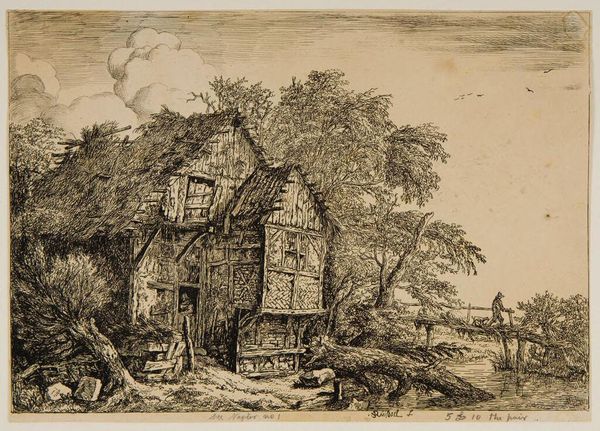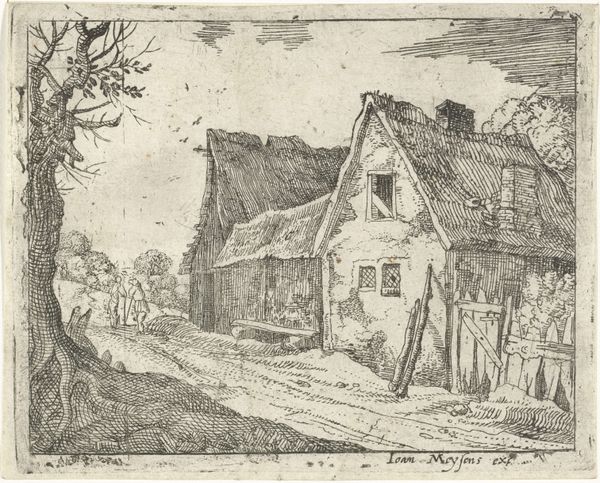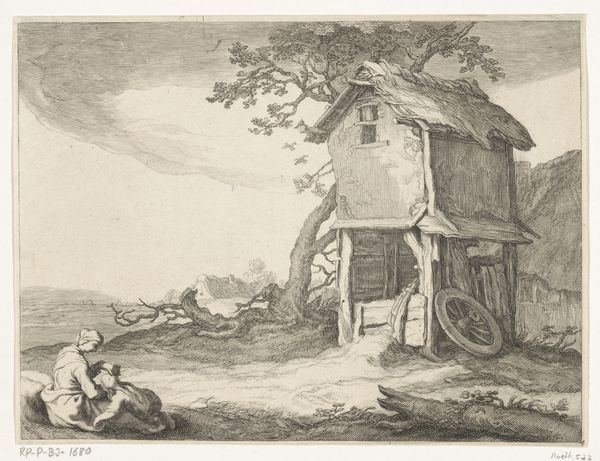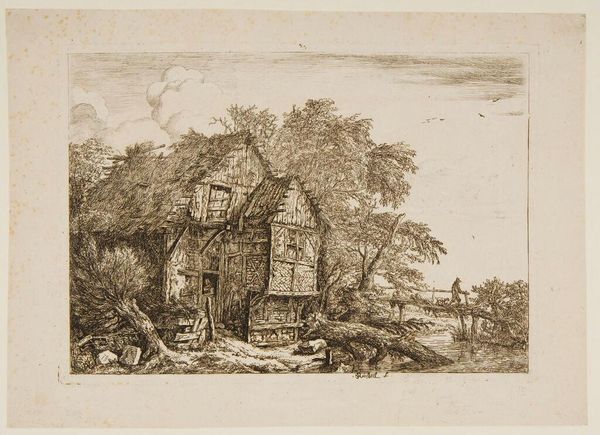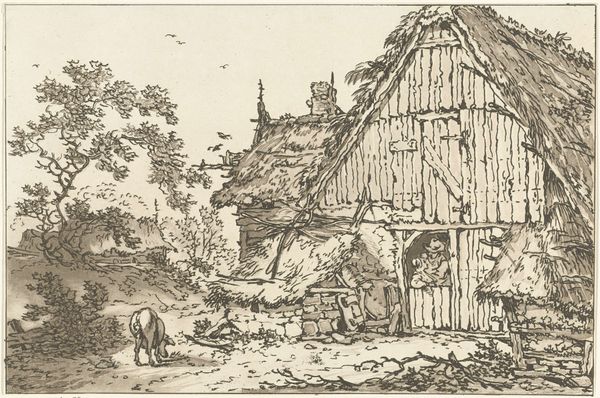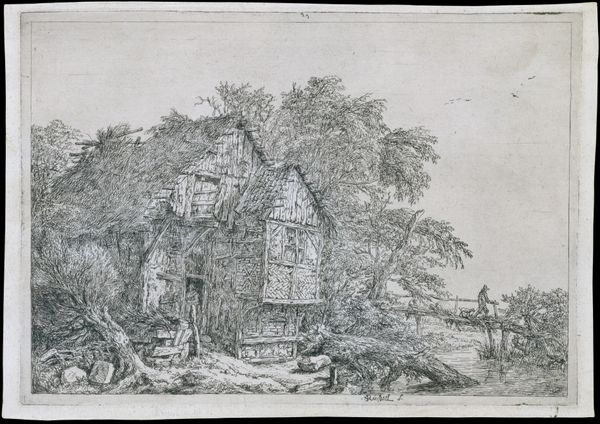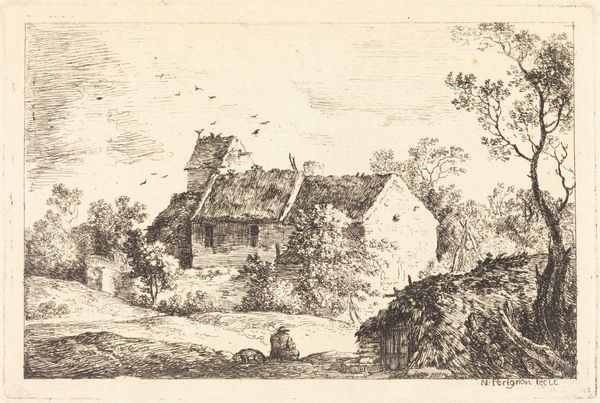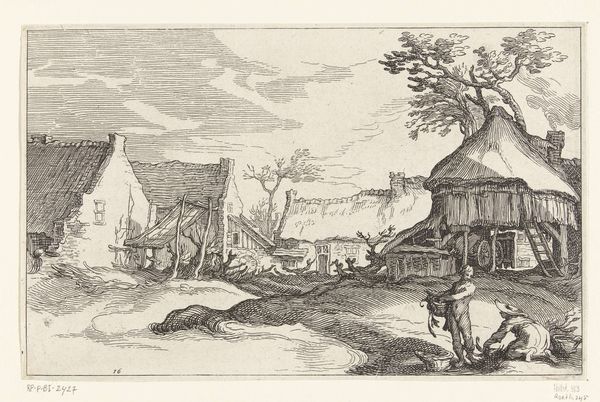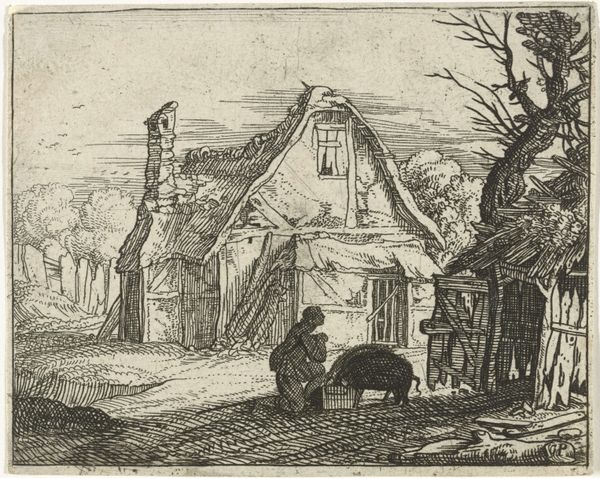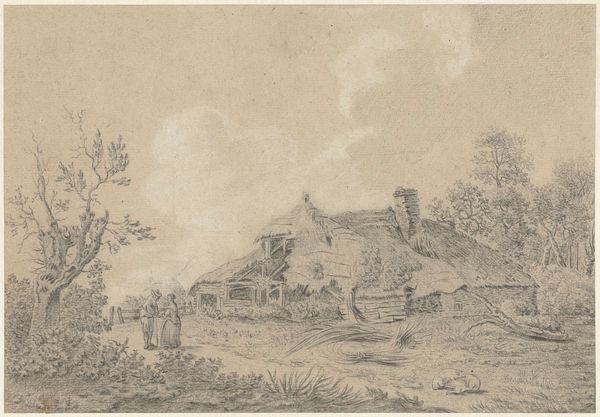
drawing, print, etching
#
drawing
#
dutch-golden-age
# print
#
etching
#
landscape
Dimensions: 185 × 270 mm (image, trimmed within plate); 197 × 280 mm (sheet)
Copyright: Public Domain
"The Little Bridge" was made by Jacob van Ruisdael, using etching, a printmaking process that relies on the corrosive action of acid. The physical labor of creating the image is immediately apparent in the dense, cross-hatched lines that define the architecture and landscape. This would have involved meticulously drawing through a wax ground on a metal plate with a fine needle, before the plate was bitten in an acid bath. The ink held in these lines delivers a wealth of texture and tone, from the crumbling timber frame of the house to the reflective surface of the water. While ostensibly a scene of rural tranquility, the etching process itself speaks to the burgeoning industries of 17th-century Europe. The production of acid, metal plates, and printing presses all relied on complex systems of labor and trade. By paying attention to the materials and processes behind "The Little Bridge," we can appreciate how it transcends the divide between fine art and the world of making.
Comments
No comments
Be the first to comment and join the conversation on the ultimate creative platform.
